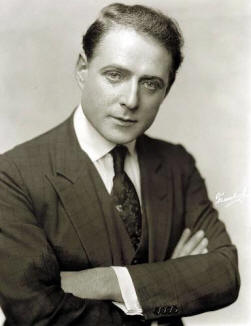

Partner James Carroll Vincent
Queer Places:
2307 Cahuenga Avenue, Los Angeles
Forest Lawn Memorial-Parks & Mortuaries, 1712 S Glendale Ave, Glendale, CA 91205, Stati Uniti
 George Jack Warren Kerrigan (July 25, 1879/1881/1882 – June 9, 1947) was an American
silent film actor and film director.[1] Kerrigan was homosexual. He never married, and lived with his lover
James Carroll Vincent from about
1914 to Kerrigan's death in 1947.[1]
George Jack Warren Kerrigan (July 25, 1879/1881/1882 – June 9, 1947) was an American
silent film actor and film director.[1] Kerrigan was homosexual. He never married, and lived with his lover
James Carroll Vincent from about
1914 to Kerrigan's death in 1947.[1]
George "Jack" Warren Kerrigan was born in New Albany, Indiana,[2] one of twin sons of John Kerrigan, from Ireland, and Sarah McLean, from Canada. Settling in Louisville, Kentucky, John Kerrigan found a job as a clerk in a warehouse, and Sarah bore six children before the twins came. They moved across the Ohio River to New Albany, Indiana, in 1880, where John took over a superintendent of a local wholesale warehouse. Jack Kerrigan worked as a warehouse clerk in his teens until a chance arrived to appear in a vaudeville production. He continued to act in traveling stock productions, though he took a brief time away from the stage to attend the University of Illinois.
He started acting with his sister Kathleen and brother in law Clay Clement, who had their own stock company touring through the Midwest. Clement offered him a part in their production of Sam Houston. He then played in Brown of Harvard in his hometown of Louisville in December 1908. He started working in movies in Chicago, where he lived together with his mother in a rooming house at 4631 Racine Street; all their fellow roomers were mostly single young men, salesmen, shoe clerks, bookkeepers, and typewriters.
He signed with Universal's Victor studios in 1913 and moved to Hollywood, with his mother, twin brother Wallace, and widowed sister Kathleen. It's around this time he started living together with James Vincent.
By the time he was 30 years old, he had begun to make appearances in films for Essanay Studios. A contract with the American Film Corporation opened the door to leading roles, often as a modern man of the age. He starred in over 300 films up to 1924.[1]
In May 1917, Kerrigan was nearing the end of a four-month-long personal appearance publicity tour that had taken him across the United States and into Canada. At one of the final stops, a reporter for The Denver Times asked Kerrigan if he would be joining the war. Kerrigan replied:
I am not going to war. I will go, of course, if my country needs me, but I think that first they should take the great mass of men who aren't good for anything else, or are only good for the lower grades of work. Actors, musicians, great writers, artists of every kind—isn't it a pity when people are sacrificed who are capable of such things—of adding to the beauty of the world.
Picked up and reprinted in newspapers across the country, this statement stunned his fans and his popularity plummeted, never to fully recover. Family members later reported in Behind the Screen (2001) by William J. Mann that his slump in popularity was more due to his living with his mother and partner James Vincent in the same house, and not having a business manager to overcome the negative publicity.[1]
In the wake of the war fiasco, Kerrigan tried to butch it up and play it straighter: in October 1919 "all the way from stricken Poland," came a nine, some source say six, years old boy to be adopted by the stat into the Kumfy Kerrigan Kottage. The child, Stephen Myronoff, crossed the country alone, under the auspices of the French Reconstruction Bureau in Paris. Shortly after the news, there is no further mention of the little lost Polish boy in the press; the adoption isn't even alluded to in fan-magazine articles a year later. In the 1920 Census, taken just a few months after the adoption hoopla, little Stephen is not listed as living with Kerrigan and family.
When director James Cruze cast him as the rugged lead in The Covered Wagon (1923), Kerrigan found himself back on top, although fleetingly. The cutter of the movie was Dorothy Arzner. In the spring of 1924, after John Barrymore bowed out, Kerrigan was assigned the starring role in Captain Blood. While the film was a moderate success, critics were unmoved and Kerrigan found himself working less and less and in smaller roles. In December 1924, Kerrigan was injured in an automobile accident in Illinois. According to the Des Moines Tribune (page 1, Monday, December 8, 1924) his face was badly scarred and it was stated that "he may never star in films again".[1]
My published books: